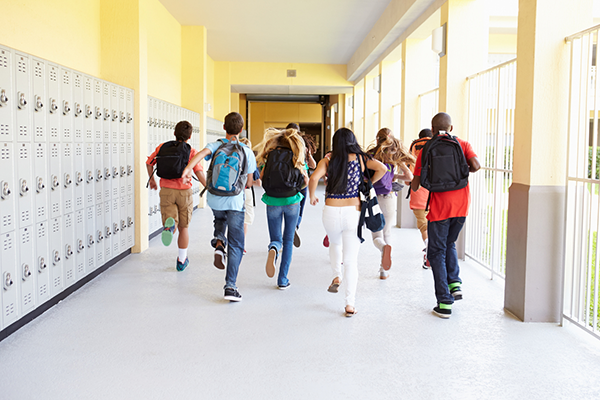
by TutorUp | Oct 16, 2023 | Education Topics
STEM Builds a Foundation for Life
In an era marked by rapid technological advancements and an ever-growing reliance on innovation, Science, Technology, Engineering, and Mathematics (STEM) education has emerged as the cornerstone of societal progress. STEM education is not merely a set of subjects; it is a dynamic and interdisciplinary approach to learning that prepares individuals for the challenges and opportunities of the 21st century.
- Fostering Critical Thinking and Problem-Solving Skills: STEM education cultivates critical thinking and problem-solving skills from an early age. By engaging in hands-on activities and real-world problem scenarios, students learn to analyze situations, think creatively, and develop solutions. These skills are not only vital in scientific and technological fields but are also transferrable to various aspects of life, empowering individuals to navigate complex challenges in any domain.
- Driving Technological Innovation: The heart of STEM education lies in fostering innovation. Students immersed in STEM fields are encouraged to question, explore, and experiment. This mindset fuels technological advancements that drive progress in fields like medicine, energy, communication, and transportation. The next breakthrough in renewable energy, medical research, or artificial intelligence may very well be conceived in the mind of a STEM-educated individual.
- Global Competitiveness: Nations with a robust emphasis on STEM education are better positioned to compete in the global economy. The workforce of the future will be dominated by jobs that require a strong foundation in STEM fields. From coding to data analysis, proficiency in STEM disciplines is becoming increasingly indispensable. Countries investing in STEM education are not only producing a skilled workforce but are also fostering an environment conducive to innovation and economic growth.
- Addressing Societal Challenges: STEM education equips individuals with the tools to address pressing societal challenges. Whether it’s finding sustainable solutions to environmental issues, developing breakthroughs in healthcare, or creating technologies to bridge socio-economic gaps, STEM professionals play a pivotal role. Through STEM education, we empower future generations to contribute meaningfully to the betterment of society.
- Closing the Gender Gap: Historically, there has been a gender disparity in STEM fields. Encouraging STEM education from an early age helps break down gender stereotypes and fosters an inclusive environment. By providing equal opportunities and representation, we can bridge the gender gap in STEM, ensuring that diverse perspectives contribute to scientific and technological advancements.
- Adaptability in a Dynamic World: STEM education instills adaptability in individuals. In a world characterized by constant change, having a foundation in STEM disciplines prepares individuals to navigate evolving technologies and industries. This adaptability is a key attribute in the face of future uncertainties and challenges.
STEM education is not just about preparing students for specific careers; it’s about equipping them with the skills and mindset needed to thrive in an increasingly complex and interconnected world. The importance of STEM education extends beyond the classroom, influencing societies, economies, and the collective human experience. Promoting STEM education, helps lay the groundwork for a future where innovation, progress, and the pursuit of knowledge propel us toward new heights of achievement and understanding.

by TutorUp | Oct 2, 2023 | Education Topics
Students can’t get off their phones
The announcement yesterday that schools across England are ordered to outlaw smartphones during lessons and break times, has given a boost to conversations about the topic. Gillian Keegan, Education Secretary in England, reportedly “believes that mobile phones pose a serious challenge in terms of distraction, disruptive behaviour, and bullying, according to an insider. ‘It is one of the biggest issues that children and teachers have to grapple with so she will set out a way forward to empower teachers to ban mobiles from classrooms.’”
School districts all over Europe have grappled with the problem, agreeing that “the presence of smartphones in the classroom – and constant notifications from apps – has been blamed for causing disruption, as well as fuelling cyber-bullying and thefts. In June, Finland became the latest country to ban phones in class in a bid to reverse a decline in exam results ”
In July of this year, UNESCO reported that “Smartphones should be banned from schools to tackle classroom disruption, improve learning and help protect children from cyberbullying.” The UN agency said there is evidence that excessive mobile phone use is linked to reduced educational performance. Additionally, high levels of screen time have a negative effect on children’s emotional stability.
Based on its analysis of 200 education systems around the world, UNESCO estimated one in four countries had banned smartphones in school, either through law or guidance. These included France, which introduced its policy in 2018, and the Netherlands, which will bring in restrictions from 2024.
The Washington Post reported in May that “schools in Ohio, Colorado, Maryland, Connecticut, Pennsylvania, Virginia, California and others banned the devices in class to curb student obsession, learning disruption, disciplinary incidents and mental health worries.”
How can schools implement and enforce a cell phone ban?
Social psychologist Jonathan Haidt has broken down the phone banning methods to five levels:
- Level 1: Students can take their phone out during class, but only to use it for class purposes.
- Level 2: Students can hold on to their phone but are not supposed to take it out of their pocket or backpack at all during class time.
- Level 3: Phone caddies in classrooms: Students put their phone into a wall pocket or storage unit at the start of each class, and then pick it up at the end of that class.
- Level 4: Lockable pouches (such as those made by Yondr). Students are required to put their phone into their own personal pouch when they arrive at school, which is then locked with a magnetic pin (like the anti-theft tags used in clothing stores). Students keep the pouch with them but cannot unlock it until the end of the school day, when they are given access to a magnetic unlocking device.
- Level 5: Phone lockers. Students lock their phone into a secure unit with many small compartments when they arrive at school. They keep their key and get access to the phone lockers again only when they leave school.
Levels 1 and 2 are the hardest to monitor and rely on student impulse control. Levels 3, 4, and 5 remove the responsibility from teachers and students, and ensure there is no phone disruption during class time. Levels 4 and 5 restrict cell phone use for the entire day.
Although most school systems have had some sort of ban, or restrictions on student cell phone use, enforcement has been lax and difficult. Teachers have complained about the extra burden of being the “phone cop”. With academic performance down in many districts, some are blaming it on social media distractions and constant connection to the internet and would like to ban the phones but don’t know how to implement such a ban.
Critics of restrictions on cell phones say they are necessary for emergencies. Students say they use them to check in with parents or coaches, and use them to check on grades or assignments. Some say they use them to listen to music, which helps them concentrate. Allowing students to bring their phones to school, but surrender them until the end of the school day can partially satisfy those objections. In a Pittsburgh suburb, though, students got around the phone surrender by giving up an old phone and keeping their current phone hidden.
In Virginia Beach, “a new regulation this school year forbids cellphone use during instructional hours or in a school setting. Middle-schoolers now must keep phones stowed in their lockers. High school students may carry phones — and use them during lunch or between classes — but not in class.”
Teachers in Kansas have raised concerns during contract negotiations, asking their districts to ban cellphones in class. Wichita high school teacher Mike Harris said that since students now have district-provided Chromebooks they can use in class, “they don’t need their cellphones to learn.”
In Danbury, CN, Kristy Zaleta, principal of Rogers Park Middle School, has switched to a compromise plan where phones are off limits except during the transition periods between classes, and during lunch. Any other time, and the phones are taken away. The result? “There’s a calmer sense,” she said. “It definitely feels like the air has changed.” The previous year, she said, “almost broke us.”
How are things going in schools with a cell phone ban?
School superintendent Bill Wilson, of the Brush, CO school district said that nearly all of their discipline issues last year were related to phones. Social media posts and texts during school hours led to conflicts, bullying, or other issues. This year, no phones allowed in classrooms, and he said he sees more interaction between teachers and students, more focus, less conflict in hallways. And only a handful of students are second-time offenders. “The majority of our students, when we surveyed them, were thankful for it because it has reduced the stress in their life,” Wilson said. “They’re not worried about what their friends are saying, at least not during school time.” Several parents were critical early on, he said, but most have been accepting.
More research needs to be done to provide high quality experimental evidence as to the benefits phone-free schools provide, but “It helped me a lot,” one student at San Mateo High School in California told NBC News after her school started using lockable pouches. “Before, I would usually just like curl over in the side of my desk, and, like, check my phone and text everyone. But now there’s no other thing for us to look at or do except for talk to our teacher or pay attention.”
For a deeper dive into the current state of cell phone addiction, please read this fabulous essay in The Atlantic by Jonathan Haidt, Get Phones Out of Schools Now.

by TutorUp | Sep 22, 2023 | Online Tutoring
Math is the most requested subject for tutoring
Math has a reputation for being a difficult subject, and this perception among students isn’t helpful. Since math is a subject that builds on skills learned from grade level to grade level, if a student starts lagging behind early, it becomes more difficult to catch up when the math gets harder.
A recent article from the Christian Science Monitor discussed the still lingering effects of the pandemic and school shutdowns on student performance in math. “Across the country, schools are scrambling to catch up students in math as post-pandemic test scores reveal the depth of missing skills. On average, students’ math knowledge is about half a school year behind where it should be, according to education analysts.”
Coupled with that, many schools are also grading more leniently because of the pandemic learning loss, and there are now many students graduating and entering college without the basic math skills they should have. Paul Vallas, former CEO of Chicago Public Schools recently said, “Higher grades are being awarded for less achievement in our schools, which helps hide our students’ struggles since the pandemic. Combine that with teachers unions pushing for fewer accountability measures, and the needed push for academic excellence withers.”
Colleges and universities are reporting that students are “struggling to grasp fractions and exponents. More students are being placed into pre-college math, starting a semester or more behind for their majors, even if they get credit for the lower-level classes.”
George Mason University in northern Virginia has started a Math Boot Camp “because of alarming numbers of students arriving with gaps in their math skills.”
Jessica Babcock, a Temple University math professor, said the problem was clear to her as she graded quizzes in her intermediate algebra class. One problem on the quiz was to subtract 8 from negative 6. “I graded a whole bunch of papers in a row. No two papers had the same answer, and none of them were correct,” she said. “It was a striking moment of, like, wow — this is significant and deep.”
Start early to fix the problem
Progress is possible in upper grades, said Sarah Powell, an associate professor at the University of Texas at Austin whose research focuses on teaching math. But she said it’s easy for students to feel frustrated and lean into the idea that they’re not a “math person.”
“As the math gets harder, more students struggle,” she said. “And so we need to provide earlier intervention for students, or we also need to think in middle school and high school, how are we supporting students?”
Boot camps, math coaches, summer programs, after-school programs, adding instructional hours and tutoring are all ways to help students build a solid math foundation. Utilizing a variety of interventions, parents can identify which ones are the most beneficial.
TutorUp can help
Parents interested in one-on-one math tutoring for their student, working with a certified teacher with classroom teaching experience may find the right tutor with TutorUp.

by TutorUp | Aug 7, 2023 | Parents and Home
It’s not just new clothes and school supplies
Whether your kids have enjoyed a quiet summer sleeping in and whiling away the days, or they’ve had a busy time with activities, travel, work, or other pursuits, it’s all about to end. School is starting, or has already started in some districts, and those lazy days of summer are over.
There’s a lot of activity around the start of a new school year, and kids of all ages are concerned about having the right supplies, maybe getting some new clothes and shoes, maybe they’re starting in a new school. Are they going to be in classes with their friends? What will their new teacher(s) be like?
What’s clear is that they have a lot on their minds. There’s excitement and also anxiety, and what they’re least likely to be focusing on is academics. Not surprising.
Getting focused
The sooner you can get past the back-to-school rush of activity and get into a new routine, the better. Summer learning loss is a reality, and teachers know they will be spending a good amount of time just getting everyone back to where they were at the end of the previous school year. Helping your child get focused will make the transition time shorter.
Address anxieties
You know how difficult it is to focus when you’re anxious or nervous, and the same is true for kids. It’s not realistic to expect that they will just effortlessly ease into the new semester and be able to focus on academics. Finding out what their worries are and helping them address those is the most helpful way to clear their minds. Even things that seem like small problems, like where the new bus stop is or what time do they have lunch, can cause stomach-churning anxiety.
Remove obstacles
If you’re a list-maker, this is a skill you can teach a child of any age. Sit down with your child and make two lists. One is for every tangible thing they feel they need or want in order to be comfortable starting school. This could be clothes, specific school supplies, a new haircut, a drive schedule for drop off and pickup, after school accommodations, lunch money, etc. Once you’re sure each item is addressed, you can check it off the list and your child can stop worrying about it.
The second list is for intangibles. What is your child concerned about? What’s happening among their peers? Sometimes just being able to verbalize what is making them anxious, sharing it with you and writing it down, helps minimize it. Reducing the number of unknowns helps reduce the worry.
Provide support
Structure and routine are proven to be calming, and help create an atmosphere where learning can take place. The sooner you can establish the new school year daily schedule, the better. Some children do better with homework right after school and others do better after dinner. Knowing your own child’s capabilities is important. Scheduling in some free time is just as important as setting aside time for homework.
As a family, you may have many different after school activities like sports, church, errands, etc. and it is challenging to get all this done, get everyone fed, and get homework done by bedtime. As much as possible, make sure your child’s to-do list for each day is cleared off by bedtime, so they can get a good night’s rest and start the next day ready to go.
Whatever your after-school childcare looks like, make sure that any care providers clearly communicate with you and with your child, and that your preferences for your child’s activities are known.
Back to learning
The goal of all this preparation is to help your child succeed in school and that means academic success too. Staying informed about what your child is studying and how they are progressing is essential. Many schools provide a mid-term report on your child’s progress and this may be your first opportunity to discover if your child is doing well academically and socially, just keeping up, or has fallen behind. Parent/teacher conferences are helpful, but many teachers are open to email or chat conversations with parents as well. Take advantage of these opportunities to track your child’s progress.
Helping your child with homework, and making sure that you (and they) know what all their assignments are, what the due dates are, how work is to be turned in, and what the teacher’s expectations are is a great way for you to stay aware of how they are doing.
When your child needs some extra support
If you find that your child is struggling with a certain subject or a project, one option for helping them is to provide tutoring support. There are learning centers that provide tutoring, group learning, or private in-person tutoring, or any number of individuals, college students, or other resources that can provide some form of tutoring support.
TutorUp provides online one-on-one personalized tutoring for students K-12 in all academic subjects. All of our tutors are certified teachers with classroom teaching experience who have been background-checked and passed our onboarding process. We are partnered with ZOOM to provide live, face-to-face tutoring sessions. To browse our tutors, or for more information, click here. And good luck with the new school year!

by TutorUp | Jul 3, 2023 | Online Tutoring
Summer slump learning loss is real
Taking a break from school can be a good thing for students, especially if the prior school year was a tough one. However, a three-month break from academic activity has a proven negative effect. By some measurements, children lose an average of 1 month and up to 2 months of learning in the time off during the summer.
Researchers from the University of Missouri first began measuring math computation and spelling skills in a 1996 study where they wanted to determine the effect of having two to three months off from learning in the summer. They amalgamated the results of 39 different studies. The results were compelling. “The meta-analysis indicated that the summer loss equaled about one month on a grade-level equivalent scale, or one tenth of a standard deviation relative to spring test scores. The effect of summer break was more detrimental for math than for reading and most detrimental for math computation and spelling.”
More recently, and following pandemic learning loss, studies have found that students in grades 1-8 lose 17% to 34% of the prior year’s learning over summer break. And significantly, the study showed that kids who fall behind one summer, tend to stay behind and even widen the gap as time goes on.
“Math, reading and history scores from the past three years show that students learned far less during the pandemic than was typical in previous years. By the spring of 2022, according to our calculations, the average student was half a year behind in math and a third of a year behind in reading,” according to Dr. Tom Kane, professor education and economics at Harvard, and Dr. Sean Reardon, professor of education and sociology at Stanford. When you add summer learning loss to the picture, it becomes more alarming.
Current statistics about summer slide:
- Kids in grades 3-5 lose about 20% of their school year gains in reading and 27% of their gains in math. (Source: Scholastic)
- Students lose about a month’s worth of learning on average over the summer. (Source: Sage Journals)
- In the summer between fifth and sixth grade, 84% of students experience summer slide in math. (Source: Kappan)
- The more kids learn during the school year, the more they’re likely to lose over the summer. (Source: Kappan)
- It can take 2 months in the fall for students to recover from summer learning loss
Things you can do to help mitigate summer learning loss:
- Set aside 30 minutes per day for some type of academic activity
- Participate in a summer reading program
- Make regular visits to the library
- Play games that reinforce reading and math skills
- Create learning experiences by visiting museums, zoos, and other nature experiences
- Keep plenty of art supplies on hand and encourage creativity
- Limit screen time
Consider summer tutoring
Your child might benefit from tutoring over the summer, even if it’s just a couple of 30-minute sessions per week. This is particularly true in subjects that your child may have struggled with during the previous school year. Teachers say that it takes a month or more in the fall, just trying to get students back to the skill levels they had before summer break. Spending some time one-on-one with a certified, classroom-experienced teacher over the summer, could be a total game-changer for your child. TutorUp can help.






